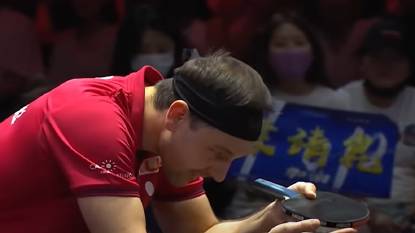Timo Boll: The Elegant Maestro Who Defined a Generation of European Table Tennis
By: Mark
September 27, 2025 | Updated: October 22, 2025
Credit: ©World Table Tennis
Timo Boll’s extraordinary 25-year international career established him as the defining European table tennis player of his generation and one of the greatest the sport has produced. The German left-hander’s remarkable longevity at the elite level—maintaining world top-20 status into his 40s—was matched by his unprecedented collection of achievements: 19 European Championship titles across singles, doubles and team events; Olympic team silver medals in 2008 and 2012; eight World Championship medals; and the distinction of being the only non-Chinese player to reach world #1 multiple times in the modern era.
Beyond statistics, Boll’s elegant playing style and exemplary sportsmanship earned him unique respect in China, table tennis’s dominant nation, making him the rare European player celebrated equally in both Eastern and Western table tennis cultures. His graceful retirement following the Paris 2024 Olympics concluded a career that redefined what European players could achieve in the modern era while establishing standards of technical excellence and sporting conduct that will influence generations to come.
Personal Background
Timo Boll was born on March 8, 1981, in Erbach, a small town in the German state of Hesse. His introduction to table tennis came remarkably early, with his father, a recreational player and local club member, placing a paddle in his hands at just four years old. This early exposure quickly revealed exceptional natural coordination and feel for the ball that would later define his playing style.
By age eight, Boll was already competing in youth tournaments, demonstrating precocious talent that caught the attention of regional coaches. His development accelerated when he began training at TTV Gönnern, a club that recognized his potential and provided structured coaching to complement his natural abilities. This small club environment proved ideal for his early development, allowing technical fundamentals to form without excessive competitive pressure.
What distinguished Boll’s background was the balanced approach to his development. Unlike many promising juniors who faced pressure to maximize early results, Boll benefited from coaches who prioritized technical perfection and tactical understanding over immediate competitive success. This long-term development philosophy established the technical foundation that would later support his two-decade elite career.
His international breakthrough came at age 14 when he claimed the European Youth Championships cadet title, announcing his potential on the continental stage. This success accelerated his progression through German youth ranks, culminating in his senior national team debut at just 16 years old—an exceptional achievement in German table tennis, known for its methodical development approach.
Boll’s formative years were shaped by Germany’s rich table tennis tradition, with former champions like Jörg Roßkopf and Steffen Fetzner serving as role models and later as mentors. This connection to Germany’s table tennis heritage provided both inspiration and practical guidance as he developed his own distinctive playing identity.
Throughout his career, Boll maintained remarkable personal stability despite growing fame. He established a home in Höchst im Odenwald, remaining connected to his roots despite international success. This grounding influence contributed to his exceptional career longevity, providing balance to the intense competitive demands of professional table tennis.
His personal life underwent significant change in 2002 when he met Rodelia Jacobi, who would become his wife in 2004. Their partnership provided crucial emotional support throughout his career’s challenges and triumphs, with the birth of their daughter in 2013 adding new perspective to his life beyond table tennis.
What truly set Boll apart throughout his development and career was his intellectual approach to table tennis—viewing it as both physical sport and mental chess match. This cerebral orientation allowed him to continuously evolve his game over a 25-year international career, adapting to changing competitive landscapes while maintaining his distinctive technical and tactical identity.
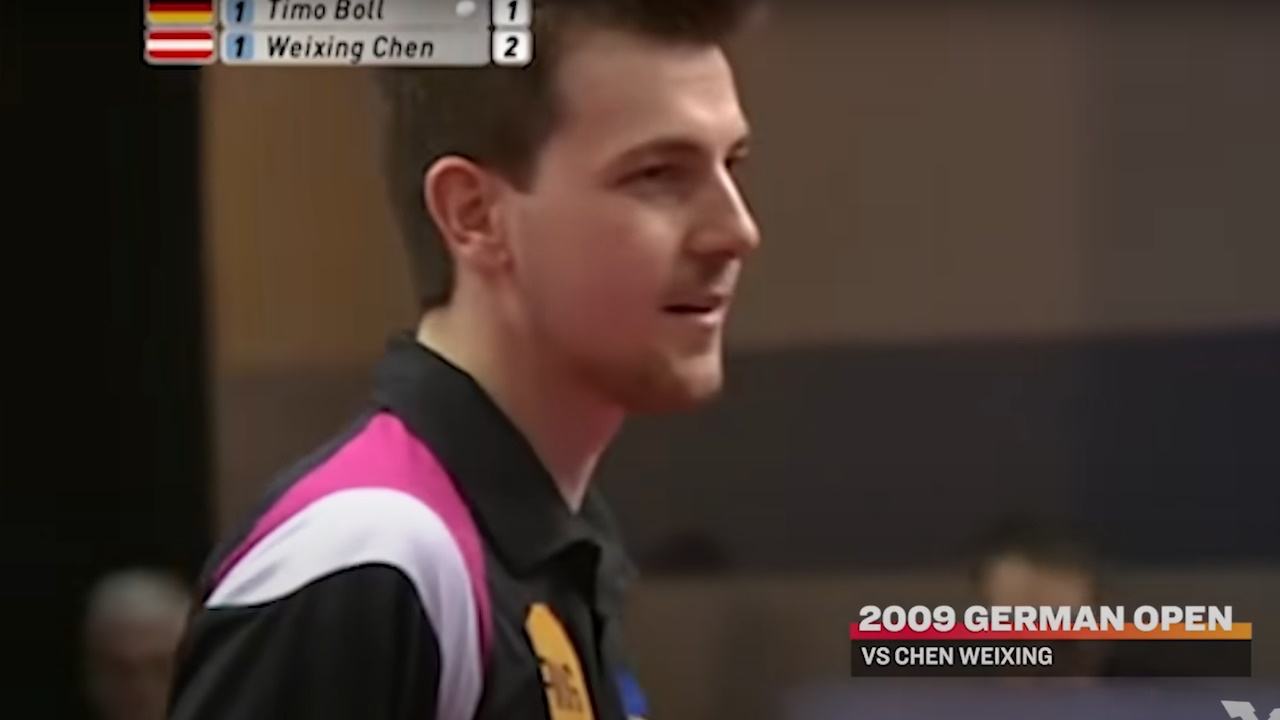
🥇 Timo Boll’s Best Ranking: World No. 1
Timo Boll first reached the World No. 1 ranking in January 2003, becoming the first German player to top the ITTF world rankings. His ascent was powered by a dominant 2002 season, marked by victories over the sport’s most formidable opponents.
📈 Journey to No. 1: Match Highlights and Ranking Rise
| Date | Tournament | Opponent(s) | Result | Significance |
|---|---|---|---|---|
| Feb 2002 | Europe Top-12 (Rotterdam) | Vladimir Samsonov | 🏆 Won Final | First German to win the event |
| Apr 2002 | European Championships (Zagreb) | Werner Schlager, Jean-Michel Saive | 🏆 Won Singles & Doubles | Dominated continental field |
| Aug 2002 | World Cup (Jinan, China) | Wang Liqin, Kong Linghui | 🏆 Won | Defeated reigning World & Olympic champions |
| Oct 2002 | ITTF Pro Tour Grand Finals (Stockholm) | Multiple top-10 players | 🥉 Semifinalist | Consistent elite performance |
| Dec 2002 | German National Champs | Steffen Fetzner | 🏆 Won | Reinforced domestic dominance |
| Jan 2003 | ITTF Rankings | — | 📈 Ranked #1 | First time atop global rankings |
📊 Timo Boll Ranking Timeline: Milestones and Shifts
| Year | Ranking Peak | Key Event or Match | Notes |
|---|---|---|---|
| 2002 | #2 | Won World Cup (Jinan) | Defeated Wang Liqin and Kong Linghui |
| Jan 2003 | #1 | European Champion | First time ranked World No. 1 |
| 2004–2006 | #5–#15 | Injuries and comeback | Lost top spot, regained form with wins in Poland and Austria |
| 2011 | #1 | ITTF Pro Tour success | Returned to No. 1 after strong performances |
| 2018 | #1 | European Team Champs | Oldest player to reach No. 1 at age 37 |
| 2022 | #15–#30 | WTT Cup Finals | Beat Lin Gaoyuan 3–2, lost to Harimoto |
| 2023 | #55–#70 | WTT Champions | Faced Lee Sang Su, Lin Gaoyuan, Xiang Peng |
| 2024 | #24 | Singapore Smash | Narrow loss to Félix Lebrun in R16 |
| 2025 | #24 | Retirement phase | Still ranked in top 30 at age 44 |
🗓️ Career Timeline: Ranking Highlights & Pivotal Matches
- 2002: Breakthrough year. Wins the World Cup in China, defeating top Chinese players. Ends year ranked #2.
- Jan 2003: Becomes World No. 1 for the first time.
- 2004: Injuries derail momentum. Drops out of top 5.
- 2005: Wins World Cup in Liège, defeating Ma Lin, Wang Hao, and Chen Qi.
- 2011: Reclaims World No. 1 after consistent Pro Tour performances.
- 2018: Historic return to No. 1 at age 37 after European Team Championship success.
- 2022: Strong showing at WTT Cup Finals, beating Lin Gaoyuan in a five-set thriller.
- 2023: Battles top-tier opponents in WTT Champions and European Team Championships.
- 2024: Competes in Singapore Smash and WTT Champions, maintaining top-30 status.
- 2025: Retires post-Paris Olympics, still ranked #24 globally.
🔥 Notable Matches That Shaped His Ranking
- 🏆 2002 World Cup Final: Boll defeats Wang Liqin and Kong Linghui — a seismic moment for European table tennis.
- 🥈 2005 World Cup (Liège): Wins against Ma Lin, Wang Hao, and Chen Qi — reasserts dominance.
- 💥 2022 WTT Cup Finals: Beats Lin Gaoyuan in a five-set thriller.
- ⚔️ 2023 European Team Champs: Narrow loss to Truls Moregard and Falck Mattias, but strong team performance.
- 🎯 2024 Singapore Smash: Epic match vs Félix Lebrun, showcasing Boll’s tactical depth.
Physical Attributes & Playing Style
Timo Boll’s physical profile represented an ideal combination of attributes for his distinctive playing style. Standing 6'1" (185cm) with a lean, athletic build, he possessed the height to generate leverage on offensive strokes while maintaining the agility necessary for his dynamic movement patterns. His left-handedness created natural advantages against predominantly right-handed opponents, particularly in service and first-attack sequences.
What immediately distinguished Boll’s playing style was its exceptional aesthetic quality—an elegant, flowing approach that combined technical precision with artistic expression. He employed a classic European shakehand grip with a slightly more open racket angle than many contemporary players, creating extraordinary versatility in stroke production and spin generation.
Boll’s forehand represented his signature weapon—a devastatingly effective topspin with unmatched versatility in the modern game. Unlike power-oriented players who prioritize speed, Boll’s forehand featured extraordinary spin variation, capable of producing heavy rotation, deceptive sidespin, or floating trajectories from identical starting positions. This deceptive quality made his attacks exceptionally difficult to anticipate or counter, compensating for what his strokes might have lacked in raw power compared to some Asian competitors.
His movement pattern was characterized by exceptional grace and efficiency, with perfectly timed footwork that positioned him optimally for each stroke with minimal wasted motion. This economy of movement contributed significantly to his career longevity, allowing him to maintain elite performance into his 40s while younger players with more explosive but energy-intensive styles often struggled with physical sustainability.
Boll’s defensive capabilities complemented his offensive prowess, demonstrating remarkable blocking technique with subtle redirections that neutralized opponents’ power while creating counterattack opportunities. His defensive skills evolved throughout his career, adapting as the sport increasingly favored aggressive play with the transition to 40mm balls and then plastic composites.
What truly separated Boll’s playing style from contemporaries was his exceptional adaptability—capable of modifying his tactical approach mid-match based on opponent strategies and playing conditions. This chameleon-like quality made him notoriously difficult to prepare against, as he rarely relied exclusively on a single playing pattern throughout matches or tournaments.
His service game featured sophisticated variation with particular emphasis on long, spinny serves that created immediate pressure while establishing tactical advantages for subsequent rallies. Rather than seeking direct points from service, Boll typically employed serves designed to create specific return patterns that he could exploit with prepared follow-up attacks.
As his physical capabilities gradually diminished with age, Boll compensated through tactical refinement and experience, relying increasingly on anticipation and strategic placement rather than pure speed. This evolution demonstrated his exceptional game intelligence, allowing him to remain competitive at the highest levels well beyond the typical competitive lifespan of elite table tennis players.
Like a masterfully conducted symphony where technical elements harmonize perfectly with tactical intention, Boll’s playing style represented the ideal fusion of traditional European technical virtues with modern competitive adaptations—creating a distinct playing identity that influenced generations of players while achieving remarkable competitive longevity.
Technical Analysis
Timo Boll’s technical execution represented the pinnacle of classical European stroke production, refined and adapted for modern competitive demands. His forehand technique featured perfect biomechanical efficiency—a slightly longer backswing than contemporary standards but with exceptional acceleration through contact, creating devastating spin with precise control. The distinguishing element was his wrist utilization—maintaining flexibility throughout the stroke while achieving perfect contact angle adjustments that produced his signature spin variations.
His forehand loop against backspin deserves particular technical analysis, widely regarded as the finest example of this stroke in modern European table tennis. Boll achieved exceptional spin through immaculate coordination of hip rotation, forward weight transfer, and wrist acceleration, with contact occurring slightly later in the stroke than most players to maximize spin production. Against topspin, he employed a modified technique with earlier contact and more horizontal brush, allowing him to redirect pace efficiently while maintaining spin dominance.
Boll’s backhand evolved significantly throughout his career, transforming from a primarily control-oriented stroke in his early years to a legitimate offensive weapon in his prime. He employed a compact modern technique with minimal backswing, generating power through exceptional core rotation and wrist flexibility rather than arm strength. This technical efficiency allowed rapid transitions between defensive blocks and offensive counter-drives, particularly valuable against the increasing tempo of modern table tennis.
His service technique featured extraordinary brush contact and deception despite relatively simple motion mechanics. Unlike players who create deception through elaborate movements, Boll achieved variation through subtle contact adjustments nearly invisible to opponents. His short backspin serves were particularly noteworthy, consistently landing within millimeters of the net while carrying heavy reverse rotation that limited aggressive receive options.
In receive situations, Boll exhibited exceptional adaptability across his career as service techniques evolved. Against short serves, his touch remained consistently world-class, producing tight pushes that neutralized service advantages or aggressive flips that immediately seized initiative. Against long services, his early recognition and compact technique allowed him to neutralize even heavy spin while establishing offensive momentum.
His footwork technique represented a model of efficiency, featuring precisely timed small steps with perfect weight transfer during transitions. Unlike younger players relying on explosive movements, Boll’s technical approach to positioning emphasized anticipation and proper preparation, minimizing distance covered through superior tactical reading. This efficiency proved crucial to his extended career, allowing him to compete effectively against physically stronger opponents well into his 40s.
What truly distinguished Boll’s technical profile was the harmony between his various stroke elements—transitioning seamlessly between offensive and defensive techniques without compromising body position or timing. This technical integration allowed implementation of complex tactical patterns without the mechanical breakdowns common in many talented but less technically complete players.
Even in his final competitive appearances at the 2024 Olympics, Boll’s technical execution remained remarkably pure despite diminished physical capabilities. While reduced speed and power were evident compared to his prime years, the structural integrity of his strokes remained intact—a testament to the fundamental soundness of technique that defined his quarter-century at the elite level of international table tennis.
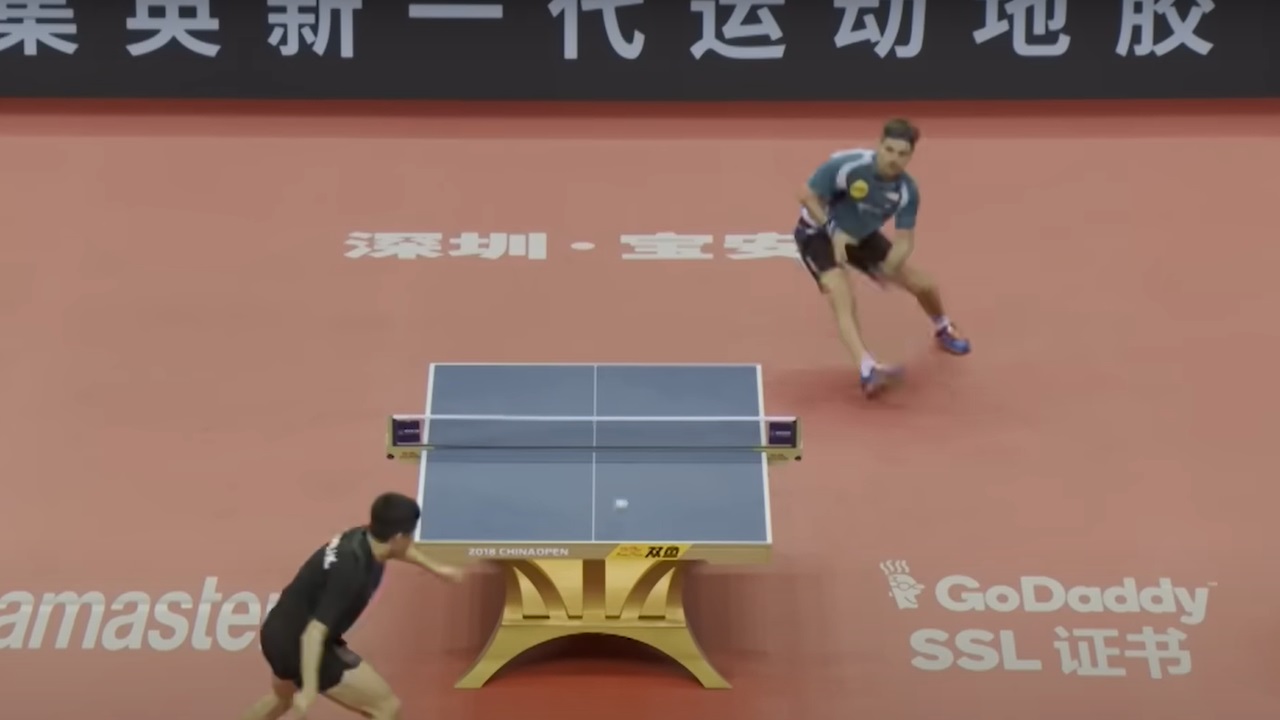
Tactical Approach
Timo Boll’s tactical intelligence represented the perfect complement to his technical excellence, demonstrating strategic sophistication that evolved continuously throughout his 25-year international career. His fundamental tactical approach centered on controlled aggression—establishing initiative through quality first attacks, then maintaining pressure through strategic variation rather than overwhelming power. This measured approach reflected deep understanding that at elite levels, tactical precision typically trumps pure physicality.
Against aggressive attackers, particularly from the Chinese national team, Boll employed a distinctive counter-strategy focused on disrupting rhythm and creating unfamiliar patterns. Rather than engaging in direct power exchanges where physical advantages might favor opponents, he systematically varied pace, spin, and placement to create hesitation and uncertainty. This disruptive approach yielded some of his most significant victories, including memorable wins over multiple Chinese world champions throughout his career.
When facing defensive specialists, Boll demonstrated exceptional patience combined with strategic acceleration at precisely chosen moments. His tactical approach against choppers typically involved extended spin-building sequences with gradual expansion of placement range, eventually creating positional vulnerabilities before executing decisive attacks. This methodical pressure often wore down even the most disciplined defensive players through accumulated precision rather than spectacular winners.
Boll’s service tactics reflected similar strategic depth, with carefully designed patterns tailored to specific opponents. His service strategy typically centered on creating favorable third-ball opportunities rather than attempting winner services, reflecting his preference for controlled tactical development rather than speculative excellence. This consistent tactical foundation remained remarkably stable across his career, even as he adapted specific implementations to counter evolving receive techniques.
In tournament settings, Boll demonstrated sophisticated energy management and tactical evolution throughout his career. In earlier years, he relied more heavily on physical attributes, while his later career featured increasingly economical approaches that preserved energy while maximizing tactical advantages derived from experience. This evolution allowed him to remain competitive at major championships well into his 40s, compensating for declining physical capabilities through superior tactical efficiency.
What truly distinguished Boll’s tactical approach was his exceptional adaptability—capable of fundamentally changing strategies mid-match based on opponent adjustments. This tactical flexibility made him notoriously difficult to defeat in extended formats, as he rarely remained committed to unsuccessful approaches, continuously evolving his tactical implementation until finding effective patterns.
His final Olympic appearance in Paris 2024 demonstrated this tactical maturity, with Boll focusing on strategic simplicity and high-percentage tactics rather than attempting to match younger opponents’ physical capabilities. While this ultimately proved insufficient against the world’s elite in singles competition, it allowed him to contribute meaningfully to Germany’s team campaign despite the 43-year age gap between himself and some competitors—a fitting conclusion to a career defined by tactical intelligence adapting to changing circumstances.
Equipment Details
Throughout his 25-year international career, Timo Boll maintained a remarkably consistent equipment setup, reflecting his preference for familiarity and technical comfort over constant experimentation. As Butterfly’s premier sponsored athlete for over two decades, he utilized equipment from their professional range, carefully selected to complement his technical style and tactical approach.
For the majority of his career, Boll employed the Butterfly Timo Boll Spirit blade, a seven-ply offensive option specifically designed to complement his playing characteristics. This blade, featuring Kiri outer plies for enhanced feeling and sensitivity, provided the perfect balance of speed and control for his spin-oriented game. In his later career years, he occasionally used the Butterfly Timo Boll ALC for certain tournaments, seeking slightly enhanced dynamics while maintaining familiar characteristics.
On his forehand, Boll predominantly used Butterfly Tenergy 05 in maximum thickness (2.1mm) for most of his prime career years. This revolutionary rubber, introduced in 2008, perfectly complemented his heavy topspin style with its exceptional spin production and distinctive ball trajectory. The 05’s characteristic high throw angle aligned ideally with his looping technique, particularly effective against backspin and for creating deceptive arcing trajectories.
His backhand side typically featured Butterfly Tenergy 64, slightly softer than his forehand rubber to enhance feeling and control in blocking sequences while maintaining sufficient grip for aggressive counter-drives. This selective differentiation between forehand and backhand rubbers represented sophisticated equipment understanding, optimizing specific characteristics for each wing while maintaining overall setup cohesion.
What distinguished Boll’s equipment approach was its remarkable stability—while many players constantly modify setups seeking marginal advantages, he maintained essentially the same configuration for extended periods, making only subtle adjustments as playing conditions or his physical capabilities evolved. This consistency allowed him to focus on technical and tactical refinement rather than continuous equipment adaptation.
His blade preparation featured minimal additional customization—standard grip size with light taping and careful attention to edge sealing to prevent moisture absorption during intense matches. These subtle details reflected the professional thoroughness that characterized his entire approach to equipment management.
Boll’s equipment choices influenced an entire generation of players, with his signature Butterfly line becoming among the most popular in table tennis history. The “Timo Boll” equipment series represented not just marketing success but equipment specifically engineered to support the technical characteristics that defined his playing style—high spin sensitivity, precise control, and versatility across offensive and defensive situations.
In the latter stages of his career, as advancing age affected his physical capabilities, Boll made subtle equipment adjustments to compensate—sometimes utilizing slightly softer rubber compositions that required less physical effort to activate while maintaining spin capabilities. These adaptations demonstrated his sophisticated understanding of equipment characteristics and their relationship to physical execution.
As one of the last elite players to compete extensively with both 38mm celluloid and 40mm plastic composite balls, Boll’s equipment choices through transition periods revealed his adaptability—modifying setups sufficiently to accommodate new material properties while preserving the core characteristics that defined his playing identity throughout his quarter-century at the elite level.
Career Achievements
Timo Boll’s extraordinary career produced an unparalleled collection of achievements that established him as the most successful German table tennis player of all time and one of Europe’s greatest sporting ambassadors. His competitive longevity—maintaining elite status across four different decades—provided the foundation for an unprecedented medal collection at the highest levels of international competition.
His Olympic journey spanned six Games from 2000 to 2024, a remarkable achievement in itself. While individual Olympic gold remained elusive, Boll secured silver medals with the German team in 2008 (Beijing) and 2012 (London), plus bronze in the team event at Tokyo 2020 (held in 2021). These Olympic team medals represented the pinnacle of his international success and cemented his legacy within German sporting history.
At World Championships, Boll accumulated eight medals throughout his career—predominantly in team events, including silver in 2004, 2010, and 2018, plus bronze in 2006, 2008, 2012, and 2022. His sole individual World Championship medal came in 2011 with bronze in Rotterdam, where he narrowly missed the final after a heartbreaking semifinal loss to China’s Zhang Jike.
Where Boll truly dominated was at the European level, amassing an extraordinary 19 European Championship gold medals across singles, doubles, and team events—a record that may never be surpassed. His eight European singles titles (2002, 2007, 2008, 2010, 2011, 2012, 2018, 2021) demonstrated remarkable longevity at the continental summit, with his final singles gold coming at age 40, defying conventional sporting timelines.
On the professional circuit, Boll claimed over 30 singles titles in ITTF/WTT events throughout his career, including multiple World Cup medals with silver in 2005 and bronze in 2002, 2007, 2008, 2010, and 2012. Perhaps most impressively, he achieved the world #1 ranking on four separate occasions between 2003 and 2011—the only non-Chinese player to reach top ranking multiple times in the modern era.
Domestically, Boll dominated German national competitions for over two decades while serving as the cornerstone of Borussia Düsseldorf, the most successful club in European table tennis. With Düsseldorf, he claimed multiple Champions League titles and German championships, establishing club success to complement his international achievements.
Beyond medals and titles, Boll’s career was defined by remarkable competitive resilience—repeatedly returning from injuries and setbacks that would have ended lesser careers. His ability to reinvent his game as physical capabilities evolved demonstrated exceptional adaptability, allowing him to remain relevant at elite levels well beyond typical competitive lifespans in table tennis.
His final major tournament appearance at the Paris 2024 Olympics provided a fitting conclusion to his illustrious career. Though he couldn’t advance deep in the singles event, his contributions to Germany’s team campaign demonstrated his enduring value even at 43, competing against players half his age. Following the Olympics, his retirement in May 2024 closed a chapter in table tennis history that had extended across a quarter-century of elite competition.
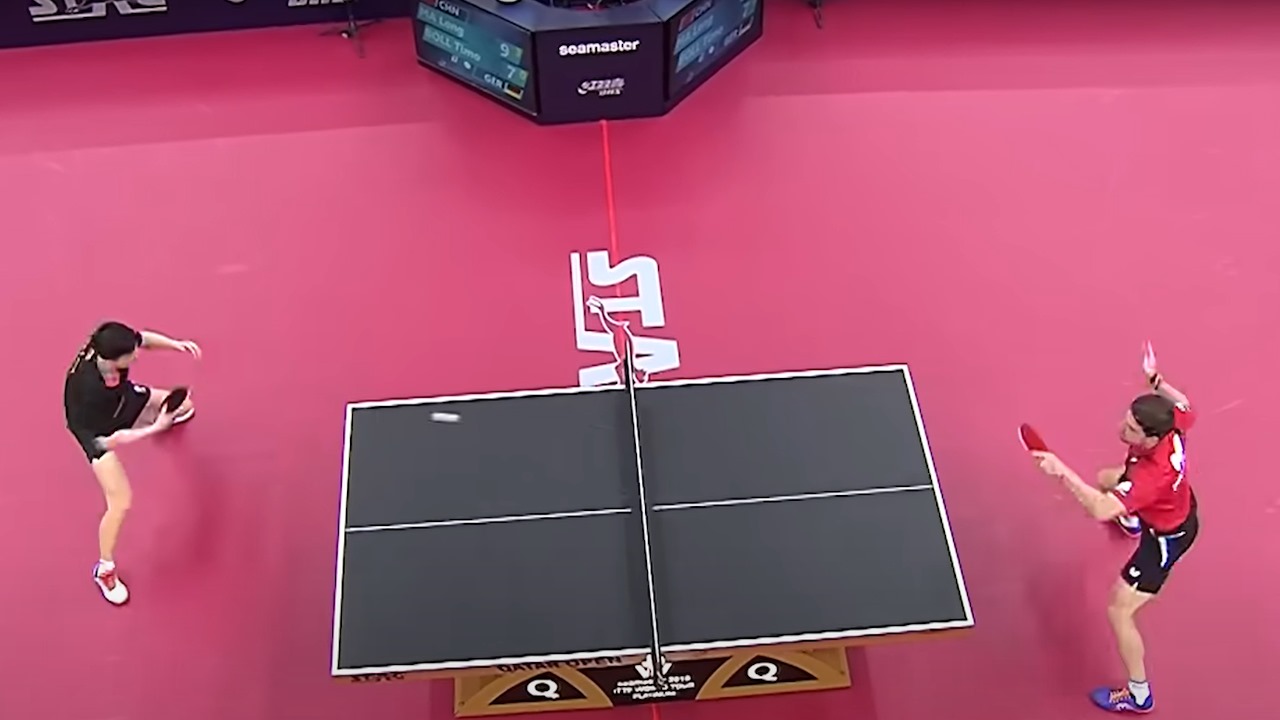
Training Methodology
Throughout his 25-year international career, Timo Boll’s training methodology evolved continuously, combining traditional German systematic approaches with innovative elements tailored to his developmental needs and physical condition. This adaptive methodology proved crucial to his exceptional longevity, allowing him to remain competitive at elite levels well beyond typical career spans in professional table tennis.
In his formative and prime years, Boll’s table training typically encompassed 5-6 hours daily, divided into specialized sessions focusing on different aspects of his game. Morning sessions often emphasized fundamental stroke production and consistency, with particular attention to his signature forehand techniques and service variations. Afternoon sessions generally focused on tactical implementation through match-play against varied sparring partners, developing the strategic versatility that became his competitive hallmark.
What distinguished Boll’s training approach was its emphasis on quality over quantity—prioritizing perfect execution over maximum repetition. Unlike some national systems that emphasized extreme volume, Boll’s German training methodology focused on efficient skill acquisition and refinement, preserving both physical and mental freshness for tournament performance. This measured approach contributed significantly to his career longevity, preventing the burnout that affected many contemporaries who trained under more physically demanding regimes.
Physical conditioning formed an increasingly important component of Boll’s training as his career progressed. In earlier years, he relied predominantly on natural athleticism supplemented by basic strength and endurance work. However, as he entered his 30s, his physical preparation became more sophisticated, incorporating specialized exercises for rotational core strength, shoulder stability, and injury prevention. This evolving physical foundation allowed him to maintain competitive viability despite the increasing physical demands of modern table tennis.
In the latter stages of his career, Boll’s training volume necessarily decreased, with greater emphasis on recovery and injury prevention. His daily routine typically reduced to 3-4 hours of table time, complemented by more extensive physical therapy and targeted conditioning. This modified approach recognized physiological realities while maximizing available training benefits—an intelligent adaptation that extended his competitive lifespan.
Video analysis featured prominently throughout Boll’s career, becoming increasingly sophisticated as technology evolved. In later years, he employed detailed performance metrics and biomechanical analysis to identify optimal technical adjustments as his physical capabilities changed with age. This data-driven approach allowed precise technical modifications that maintained competitive effectiveness despite gradually diminishing speed and power.
Mental preparation represented a crucial element of Boll’s training methodology throughout his career. Working with sports psychologists, particularly in his later years, he developed sophisticated techniques for maintaining focus during pressure situations and managing the psychological challenges of competing against physically stronger, younger opponents like Truls Möregårdh. This mental resilience proved especially valuable in his final competitive years, allowing tactical intelligence to compensate for natural physical decline.
What truly defined Boll’s training philosophy was its thoughtful integration of traditional fundamentals with necessary innovations—respecting established German methodologies while selectively incorporating elements from other systems when beneficial. This balanced approach produced a player who maintained technical purity while developing the adaptability required for two decades of elite competition across multiple generations of international table tennis.
Influence & Legacy
Timo Boll’s influence extends far beyond his impressive collection of medals and titles, establishing a legacy that has shaped modern table tennis across multiple dimensions. His 25-year international career spanned critical transitions in the sport’s development, with Boll serving as both participant in and catalyst for evolutionary changes that defined the modern game.
Throughout his storied career, Timo Boll’s longevity and success have often drawn comparisons to the Swedish legend Jan-Ove Waldner, with Boll himself acknowledging Waldner as “one of the greatest players of all time”. This parallel is most evident in their dominance at the Europe Top 16 Cup, a tournament where Boll equaled and then surpassed a significant record once held by the “Mozart of table tennis”. Waldner set a high bar by winning the event seven times between 1984 and 1996. In 2020, Boll matched this feat with his seventh title, and in doing so, he cemented his status as a European icon in the same legendary conversation as Waldner, whose extraordinary career made him a sporting hero far beyond his native Sweden.
His most significant influence lies in redefining possibilities for European players in an era of increasing Asian dominance. As Chinese systematic development created seemingly insurmountable advantages, Boll demonstrated that individual brilliance combining technical excellence with tactical intelligence could still challenge the sport’s hegemonic powers. His victories over multiple Chinese world champions throughout his career provided both practical templates and psychological inspiration for European players facing seemingly overwhelming odds.
Technically, Boll’s influence on stroke production remains evident in training halls throughout Europe and beyond. His forehand technique, particularly his loop against backspin, established standards of excellence that coaches continue referencing when developing young players. The distinctive “Boll forehand”—combining exceptional spin with deceptive placement—influenced an entire generation of players who sought to emulate his technical elegance and effectiveness.
Perhaps Boll’s most unusual legacy lies in his unprecedented popularity in China—table tennis’s dominant nation and spiritual home. His technical brilliance, sportsmanship, and respectful appreciation of Chinese table tennis culture earned him admiration rarely accorded to foreign players. This cross-cultural appeal made Boll a unique ambassador for European table tennis within Asian markets, bridging traditional divisions and fostering mutual respect between different table tennis traditions.
His sportsmanship created defining moments that transcended competitive outcomes, including his famous 2005 World Cup incident when he corrected an umpire’s error that had awarded him a point, despite being in a crucial stage of the match. This and similar acts throughout his career established ethical standards that influenced perceptions of sporting conduct within table tennis, earning Boll universal respect that extended beyond his technical brilliance.
For German table tennis specifically, Boll’s extended excellence provided stability and inspiration through multiple generations. From succeeding legends like Rosskopf and Fetzner to mentoring current stars like Dima Ovtcharov and Patrick Franziska, Boll connected eras of German excellence while maintaining the nation’s relevance at elite levels despite increasing global competition. His leadership within the national program established standards of professionalism and commitment that continue informing German table tennis development.
Commercially, Boll’s impact revolutionized athlete marketability in table tennis. His long-term partnership with Butterfly created the sport’s most successful equipment line, while his appeal in Asian markets, particularly China, opened sponsorship opportunities previously unavailable to European players. This commercial success demonstrated table tennis athletes’ potential value beyond competitive achievements, expanding financial possibilities for current and future generations.
As the sport evolved through equipment changes—from speed glue prohibition to the transition from celluloid to plastic balls—Boll’s adaptability provided a model for technical and tactical evolution while maintaining playing identity. His capacity to modify his approach while preserving core strengths demonstrated pathways for successful adaptation to changing conditions—a valuable template for players navigating table tennis’s continuing technological evolution.
Following his retirement in May 2024 after the Paris Olympics, Boll’s enduring legacy remains secure—not merely as Germany’s most accomplished player but as one of table tennis’s defining figures who successfully bridged distinct eras while establishing standards of excellence, sportsmanship, and longevity that will influence the sport for generations to come.
Final Career Chapter and Retirement
Timo Boll’s final competitive chapter and retirement represented a masterclass in graceful athletic transition, concluding a 25-year international career with dignity that matched the elegance of his playing style. His approach to these concluding years demonstrated the same intelligence and class that characterized his entire table tennis journey.
As physical capabilities inevitably diminished, Boll adapted his game with remarkable effectiveness, compensating through tactical refinement and experience. While his movement speed and explosive power gradually declined from his prime years, his technical fundamentals remained extraordinarily sound, allowing him to compete effectively against much younger opponents through positional excellence and tactical sophistication.
The COVID-19 pandemic and subsequent postponement of the Tokyo Olympics created unexpected challenges but also opportunities in Boll’s career timeline. Originally planning to conclude his Olympic journey in 2020, the delay to 2021 required additional physical preservation and motivation. His performance in Tokyo vindicated this extended commitment, contributing significantly to Germany’s team bronze medal—his third Olympic medal at age 40.
Following Tokyo, Boll carefully managed his tournament schedule, focusing on quality performances in selected events rather than maintaining ranking through constant competition. This measured approach preserved his physical capabilities while allowing targeted preparation for major championships, including the 2022 World Championships in Houston, where he contributed to Germany’s team bronze medal at age 41.
His final European Championships appearance in 2023 provided emotional symmetry to his continental career. Though unable to add to his record eight singles titles, his quarterfinal performance demonstrated competitive relevance even against Europe’s emerging generation of talents. More importantly, his mentorship role with younger German players during the event highlighted his evolution from team leader to elder statesman, ensuring his influence would extend beyond his playing career.
Boll’s decision to conclude his career following the Paris 2024 Olympics reflected perfect timing—allowing participation in a sixth Olympics while acknowledging physical realities at age 43. The announcement, made months before the Games, created opportunities for appropriate recognition throughout his final competitive season, with tributes at tournaments acknowledging his extraordinary contributions to table tennis.
At the Paris Olympics, Boll competed with realistic expectations but characteristic determination. Though unable to advance deep in singles against players half his age, his contributions to Germany’s team campaign demonstrated his enduring value. His Olympic journey concluded with quarterfinal elimination in the team event—not the medal he hoped for but a respectable final chapter for an unprecedented Olympic career spanning six Games across 24 years.
His formal retirement announcement in May 2024 struck the perfect tone—expressing gratitude to supporters, acknowledging the privilege of his extended career, and confirming his continued involvement with the sport in mentorship and ambassadorial roles. The global response reflected Boll’s universal respect, with tributes from competitors, officials, and fans across national and cultural boundaries acknowledging not just his athletic excellence but his exemplary representation of table tennis’s values.
In his retirement statement, Boll expressed particular pride in maintaining competitive relevance across four different decades of elite table tennis—an achievement reflecting both natural talent and exceptional professional dedication. This longevity allowed him to experience table tennis’s evolution from niche sport to global entertainment, with Boll himself playing a significant role in that transformation through his appealing style and exemplary conduct.
Like his signature forehand loop—technically perfect, precisely controlled, and delivered with unmistakable elegance—Boll’s career conclusion represented the ideal execution of athletic transition. His timing, messaging, and perspective provided a template for graceful retirement that future generations of players would do well to emulate when facing their own competitive conclusions.
Follow Timo Boll on social media
Timo Boll’s 10 Best Poinrs [Video]
Featured Articles
Dive into in-depth stories, exclusive interviews, and expert advice from the world of table tennis. Discover strategies, player spotlights, and behind-the-scenes insights.

Ping Pong Revolution: How Table Tennis Transforms Homes, Offices, and Communities
Table tennis is uniquely positioned as one of the most versatile recreational activities available today. This comprehensive article explores the transformative impact of ping pong across three …
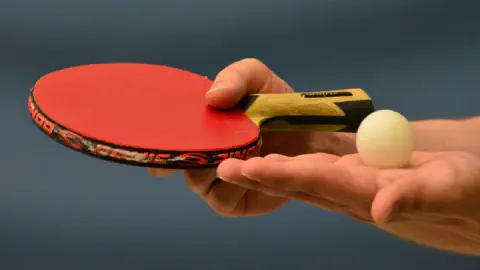
Basic Equipment Needed to Play Table Tennis
What is the basic equipment that you need to get started with playing ping pong? Our guide to the very basic table tennis equipment required to go ahead and start to play. A guide to the basics of …
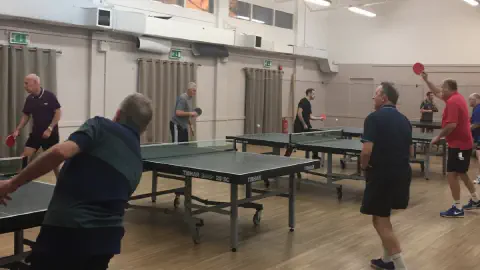
Is Ping Pong Good Exercise? The Top Health Benefits Explained
Table tennis is great exercise both for mind and body. You can use ping pong to keep fit alongside other exercise programs and raise your overall activity levels to lose weight and keep your mind …

Ping Pong Revolution: How Table Tennis Transforms Homes, Offices, and Communities
Table tennis is uniquely positioned as one of the most versatile recreational activities …

Basic Equipment Needed to Play Table Tennis
What is the basic equipment that you need to get started with playing ping pong? Our guide …

Is Ping Pong Good Exercise? The Top Health Benefits Explained
Table tennis is great exercise both for mind and body. You can use ping pong to keep fit …

